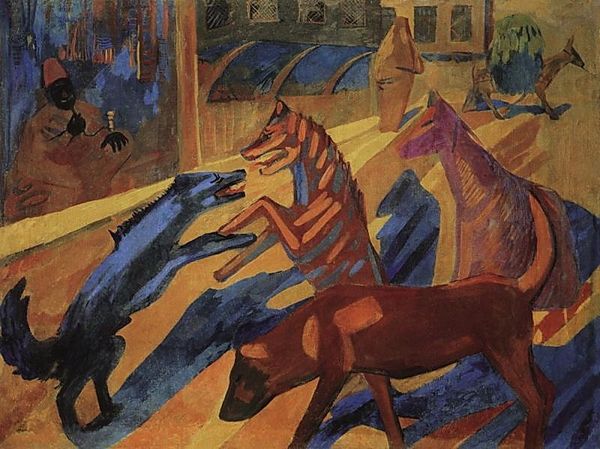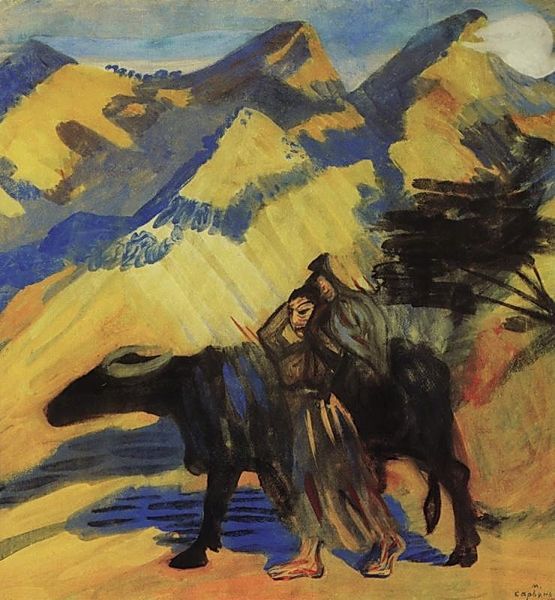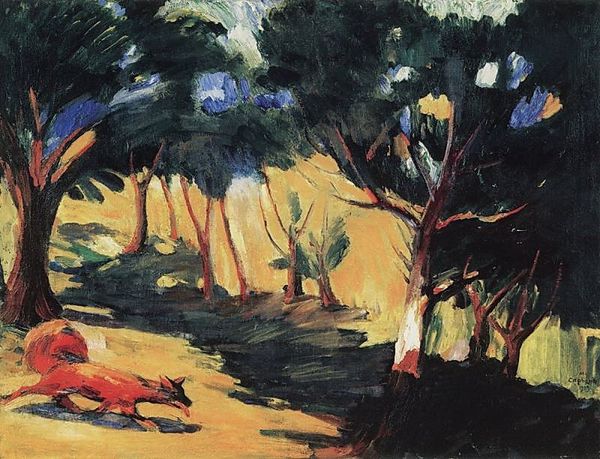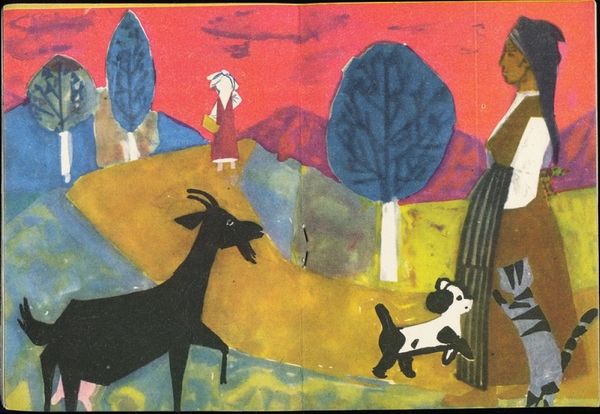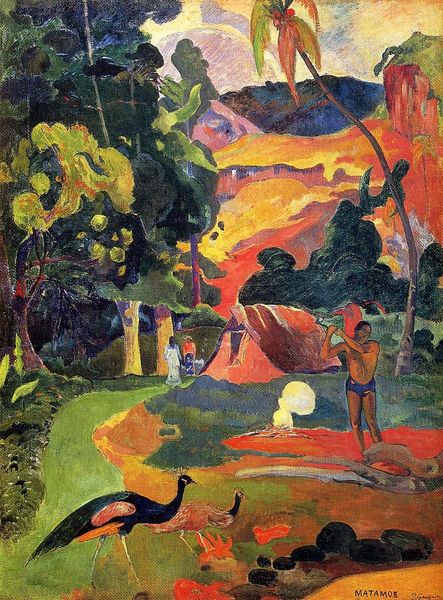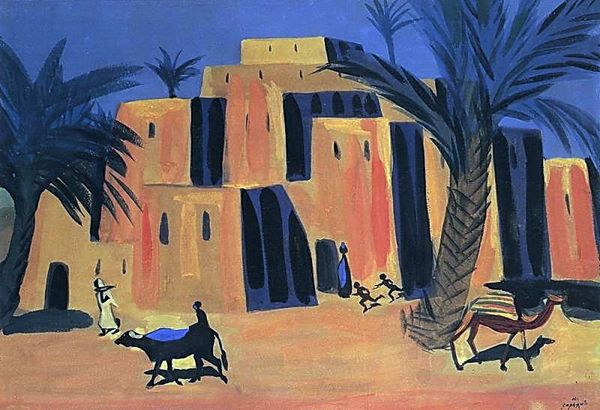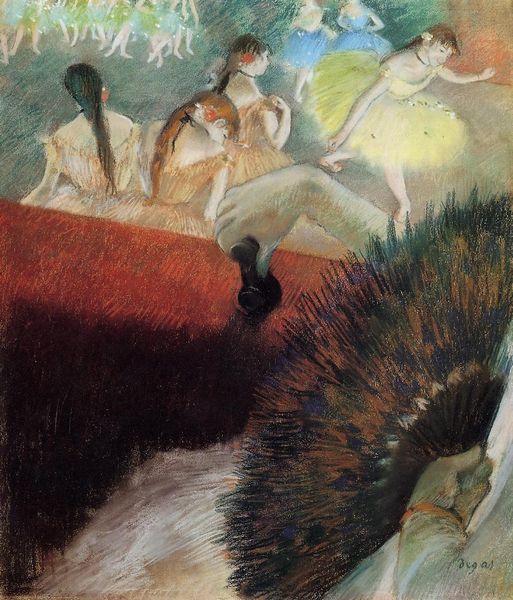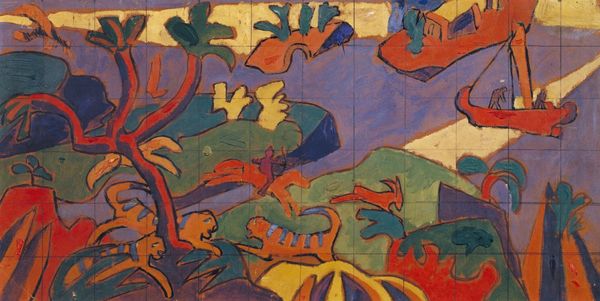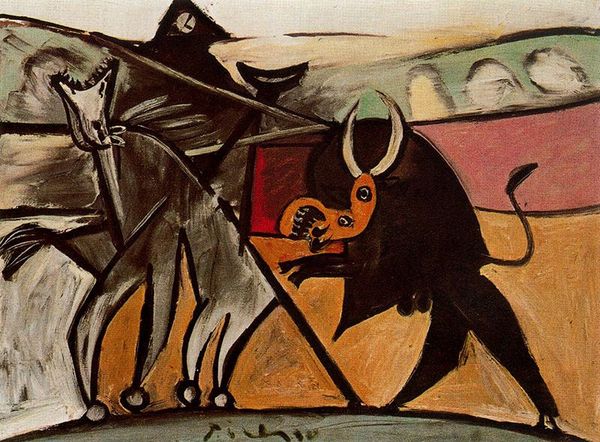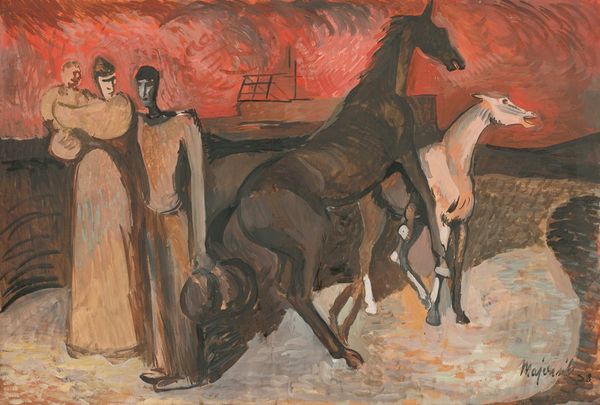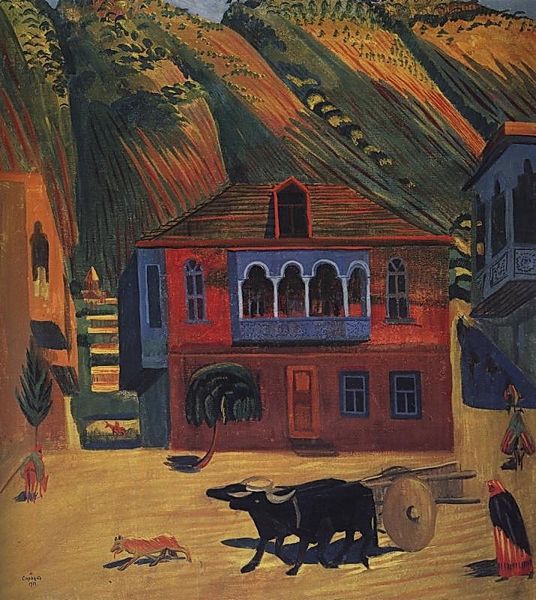
painting, oil-paint
#
animal
#
painting
#
oil-paint
#
dog
#
landscape
#
figuration
#
oil painting
#
expressionism
#
orientalism
#
horse
#
men
Dimensions: 89 x 76 cm
Copyright: Public domain US
Curator: Martiros Sarian’s “On the Horse,” painted in 1912. Sarian was an Armenian painter, and this work offers a fascinating glimpse into his Orientalist explorations, produced through oil paint. What are your initial thoughts on the painting? Editor: It's raw. I immediately key into the materiality, how thickly that pigment's been laid down. You can almost feel the hand of the artist moving that paint across the canvas. And those earthy tones really connect to a sense of landscape, a specific place. Curator: Precisely! The application, which could be described as expressionistic, brings out vibrant life amidst simplified shapes. Looking at it now, one can analyze its role in constructing images of the Orient, as many artists did in this era, focusing specifically here on equestrian culture. It really evokes an exoticism, while the use of materials anchors the image in a physical reality, what do you think? Editor: The construction is really fascinating, specifically the layering of paint, suggesting an urgency or speed in the artmaking itself. It makes me consider Sarian's relationship to his materials, the sourcing, the grinding of pigments, the specific properties of oil paint and its impact on depicting the light of this landscape, very vivid for an oil. Curator: And yet, while the means are relatively simple, its reception wasn't always so. We have to acknowledge how institutions shape our perspective. In its time, "On the Horse" existed amid a broader art world, an expanding global exchange. Sarian's work found an audience, yet its reception would have been greatly varied due to prevailing perceptions, something which has drastically shifted since. Editor: Exactly, and when looking into these social contexts and art consumption, do we also address that very grounded presence of craft, and folk art traditions feeding into what might be understood as fine art today? I think it calls into question that clear line between making and "high art" that you just touched on. Curator: That’s a wonderful point, one I'll continue to mull over, to consider the impact of societal values when encountering “On the Horse,” and Sarian’s place within cultural currents. Editor: Likewise, I’ll be turning over the nature of the hand in shaping our encounter with a work like this, not just the aesthetic encounter, but an analysis of making practices.
Comments
No comments
Be the first to comment and join the conversation on the ultimate creative platform.
